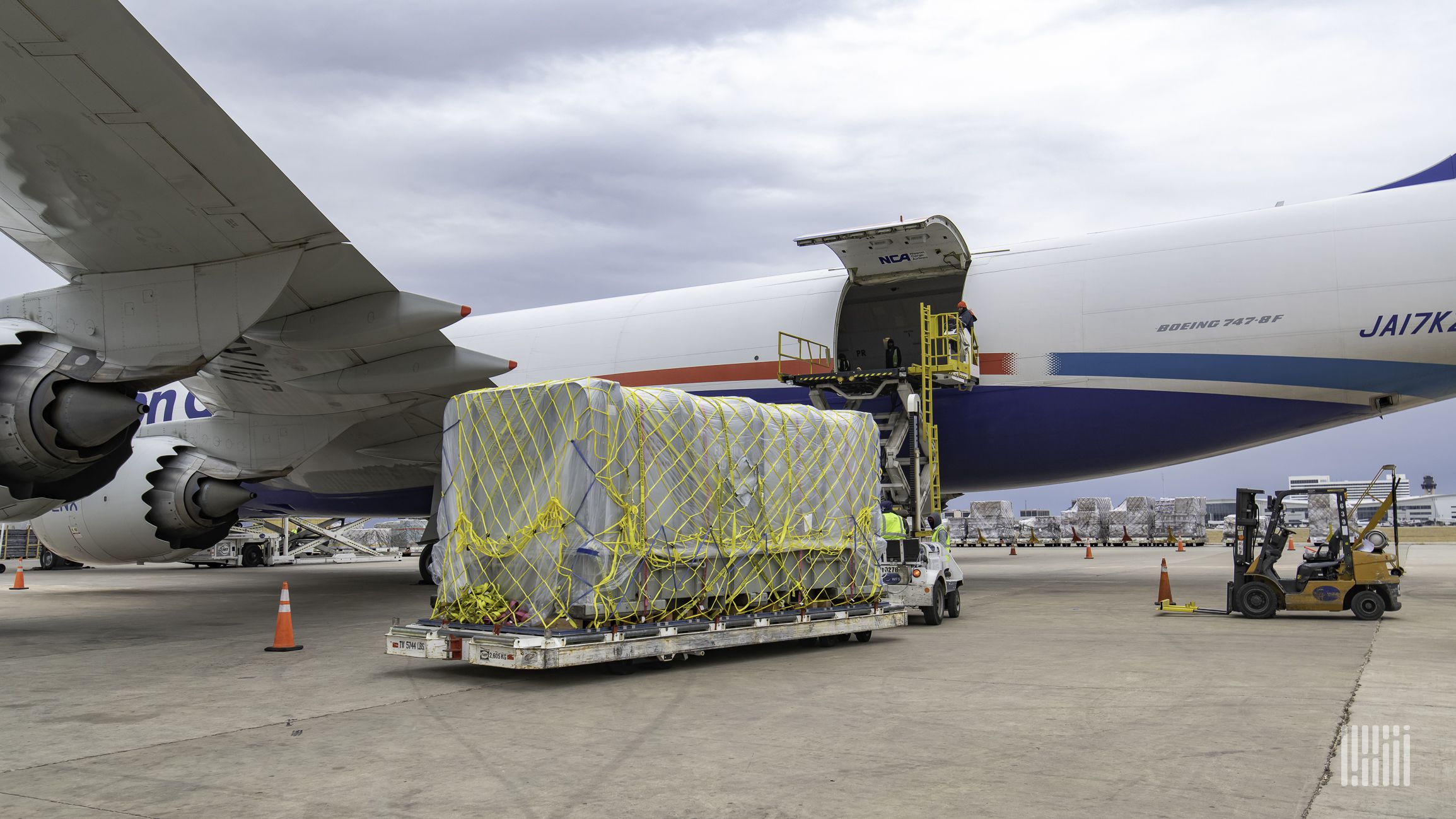Air freight transport plays an important role in international trade. With the need to transport goods quickly and safely, air freight services have become more popular than ever. Although the volume of air freight is not much, the value is equivalent to sea freight. Therefore, what are the types of cargo in air freight? Let’s find out the classification of goods in the article below.
Types of cargo in Air Freight
General Cargo
This is the type of goods whose attributes do not matter in regard to packaging, content and size. Not all shipments are easily accepted for air transportation. Packages must be checked for dimensions (length, width, height) to fit, not too large compared to the cabin of the aircraft. In addition, the packaging must be sturdy, withstand the force of transportation and handling.

Special cargo
This is a commodity with distinct properties and high value that requires special handling during storage and transportation. Includes the following types:
- Live animals
- Valuable goods
- Diplomatic goods
- Human Remains
- Perishable goods
- Hazardous cargo
- Wet goods
- Smell goods
- Heavy cargo
Special goods
Live Animals (AVI)
- AvB = live bird
- AVF = live fish
- Avx = raw chicken
Live animal transportation requires specific handling, and there are rules and guidelines for receiving, and packing. All animals must meet the requirements for acceptance and packaging, which are detailed in the cargo handling regulations.
In fact, unless they are very enormous or very heavy, almost all animals may be transported in a cargo plane. Generally, animals can be transported in the cargo hold of passenger airplanes as long as they do not cause odors.
An example of a cargo of this type: elephants, which are allowed on cargo aircraft only, and B747s. Age restriction: 12 months old, weight limit 400kg/pack in a hard case or carton that must meet a large number of separately listed specifications.
Valuable Goods (VAL)
These are shipments with a value of 100,000 per kilogram or more, as well as precious metals, bank notes, and more. Such cargo must be stored in safe conditions and monitored by airport security.

Diplomatic Goods (DIP)
These are mainly very important shipments between ministers, consular offices and embassies. The package will be kept at a unique warehouse.
Human Remains (HUM)
Ash must be carefully packed and a quarantine certificate from the health authority is required. Commodities in the form of bones must be sealed in a closed box and have a quarantine certificate from the health agency. Thus, it is clear that specific packaging and processes are needed for the transported remains. Furthermore, the requirements may vary depending on the destination country
Perishable Goods (PER)
This cargo is particularly suitable for air freight, and space is often preferred. This provision applies to fresh meat, fruit, vegetables and the like including newspapers.
Dangerous Goods
Considering the nature of the goods
Category 1: Explosives
Category 2: Gas
Category 3: Flammable liquid
Category 4: Flammable solids
Category 5: Oxidizing substances
Category 6: Toxic and infectious substances
Category 7: Radioactive substances
Category 8: Corrosive substances
Category 9: Other substances

Such goods may be hazardous (through fire, explosion, leakage, radiation) to:
- People in the plane
- That plane
- Other goods on the plane
As such, goods can only be transported by air with certain conditions to ensure safety. Harm can occur from:
- Flammable substances
- Explosives
- Corrosive acid etc.
For all types of aircraft, dangerous goods will be specified with a certain maximum weight, package and markings. The “dangerous goods regulations” include a list of all requirements and limitations for this cargo as well as a list of more than 3000 chemicals. For instance, explosives will not be accepted, but ammunition for light weapons, gasoline, sulfuric acid, arsenic, etc., can be transported.
Wet Goods (WET Code)
For example, transporting eels and meat
In the case of the eel, the plastic is placed on the pallet first and the fish is covered with a wet blanket. With meat, the plastic is placed on a pallet.
Smell Goods (SMELL)
Depends on the nature of the goods. For example, French cheese, garlic, oil or some other substance.
Large Goods (BIG, HEA)
When transporting a large item, the possibility of clinging to another pallet should be considered. When transporting a heavy object, the weight per unit area will be limited.
Contrary to other forms of transportation, air freight is subject to a number of strict laws for the security and safety of cargo while transporting. Therefore, knowing the different types of cargo in air freight can help you better comprehend it and choose the best shipping method for your items.


